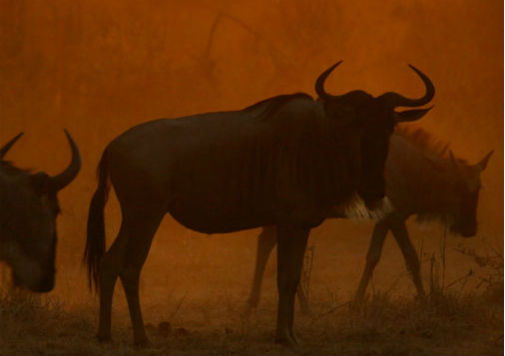The Serengeti-Mara squeeze – one of the world’s most iconic ecosystems under pressure
Posted on 28 March 2019

The migration routes of wildebeest are being disrupted. Pic credit: Thomas Morrison
The Serengeti-Mara ecosystem is one of the largest and most protected ecosystems on Earth, spanning 40,000 square kilometres and taking in the Serengeti National Park and Maasai Mara National Reserve in East Africa.
Every year a million wildebeest, half a million gazelle and 200,000 zebra make the perilous trek from the Serengeti national park in Tanzania to the Maasai Mara reserve in Kenya in their search for water and grazing land.
Now, an international team of scientists have discovered that increased human activity along the boundaries is having a detrimental impact on plants, animals, and soils.
Population growth
The study looked at 40 years of data, and revealed that some boundary areas have seen a 400 per cent increase in human population over the past decade, while larger wildlife species in key areas in Kenya have declined by more than 75 per cent.
The study reveals how population growth and an influx of livestock in the buffer zones of the parks has squeezed the area available for migration of wildebeest, zebra and gazelles, causing them to spend more time grazing less nutritious grasses than they did in the past. This has reduced the frequency of natural fires, changing the vegetation and altering grazing opportunities for other wildlife in the core areas.
The study shows that the impacts are cascading down the food chain, favouring less palatable plants and altering the beneficial interactions between plants and microorganisms that enable the ecosystem to capture and utilize essential nutrients.
Future shocks
The effects could potentially make the ecosystem less resilient to future shocks such as drought or further climate change, the scientists warn.
The authors conclude that, even for reasonably well-protected areas like the Serengeti and Mara, alternative strategies may be needed that sustain the coexistence and livelihood of local people and wildlife in the landscapes surrounding protected areas. The current strategy of increasingly hard boundaries may be a major risk to both people and wildlife.
The study was led by the University of Groningen with collaborators at 11 institutions around the world, including the universities of York, Glasgow and Liverpool.
Urgent need
Dr Colin Beale, from the University of York’s Department of Biology, said: “Protected areas across East Africa are under pressure from a wide range of threats. Our work shows that encroachment by people should be considered just as serious a challenge as better known issues such as poaching and climate change.”
Dr Michiel Veldhuis, lead author of the study from the University of Groningen, said: “There is an urgent need to rethink how we manage the boundaries of protected areas to be able to conserve biodiversity. The future of the world’s most iconic protected area and their associated human population may depend on it.”
Dr Simon Mduma, Director of the Tanzanian Government’s Wildlife Research Institute added: “These results come at the right time, as the Tanzanian government is now taking important steps to address these issues on a national level.”
“This paper provides important scientific evidence of the far ranging consequences of the increased human pressures around the Serengeti-Mara ecosystem, information that is now urgently needed by policy makers and politicians.”
Explore more news

New butterfly species created 200,000 years ago by two species interbreeding
Thursday 18 April 2024

Children in the North at greater risk of entering care
Wednesday 17 April 2024

Boreal forest and tundra regions worst hit over next 500 years of climate change, study shows
Monday 8 April 2024

Researchers developing ultra-sensitive blood test with potential to revolutionise diagnosis of Alzheimer’s
Thursday 4 April 2024

Attitudes to being an adult are shifting as traditional milestones become out of reach, new study finds
Wednesday 27 March 2024
Media enquiries
About this research
The findings, published in the journal Science, were led by an international team including the Universities of York, Groningen, Glasgow and Liverpool.
Explore our research here.
